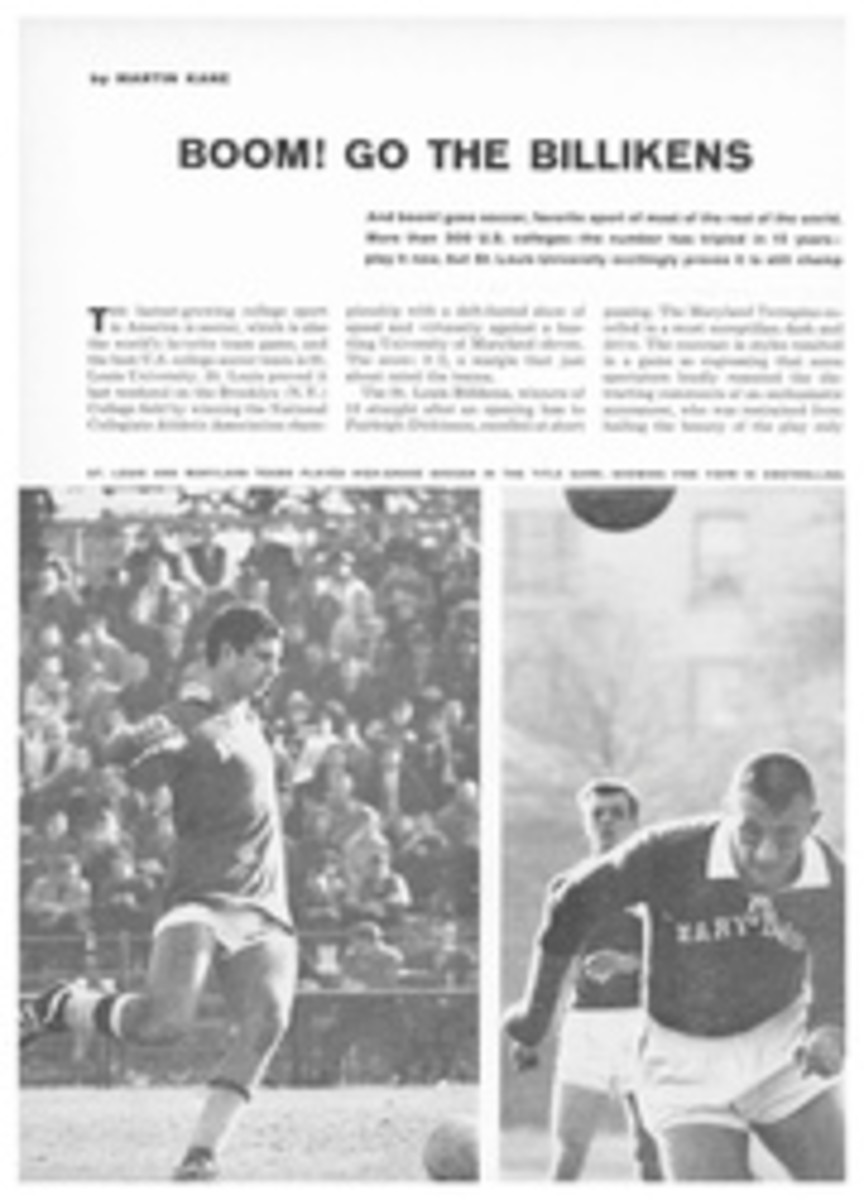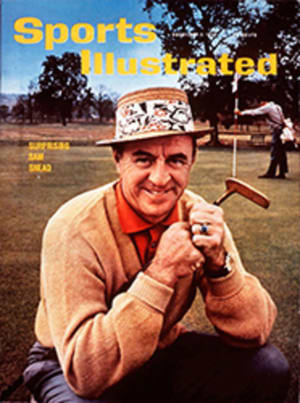
A master among the moguls
Swinging down through a field of moguls at Arapahoe Basin, Colo., Olympic Racer Hanspeter Lanig demonstrates the ultimate in short-swing skiing for John G. Zimmerman's sequence camera. To make this difficult descent, in which he stays close to the fall line but never moves faster than 10 to 15 mph, Lanig picks his way carefully through the rutted snow, and at the precise moment checks his speed by a strong heel thrust against the top of each bump. This controlled heel thrust is the key to successful skiing; on the following pages the movement is demonstrated in detail so that skiers at any level of ability can apply it to improve their technique on all types of terrain.
Essence of the shortswing
The controlled heel thrust which Hanspeter Lanig used on the previous page represents the essence of modern ski technique. It emerged as such after three winters of patient research by some of the nation's top instructors. Below, it is shown as the prime mover in a parallel turn, and then isolated at right for a more detailed analysis
THE BASIC TURN
The parallel turn (above) activated by a heel thrust is the basic maneuver which Hanspeter Lanig used in sequence on the preceding pages. Although Lanig executes it with an Olympian's grace on the most difficult terrain, this turn is just as useful and just as essential to an intermediate who wants to negotiate a practice slope correctly. Heel thrust occurs at positions 2, 3 and 4 of the turn.
THE ALL-IMPORTANT HEEL THRUST
When the shortswing was first introduced to American skiers (SI, Nov. 25, 1957), the two distinctive features of the new technique were the reverse shoulder and the comma position. Since then, most instructors have emphasized the comma and the reverse shoulder, bringing in the heel push only as the final movement in the turn. I believe this is wrong. I feel that the key to the shortswing is not the comma or the reverse shoulder, but the heel thrust. And I believe, further, that every turn through the fall line should be preceded by a downward thrust of the heels.
The man most responsible for bringing out this basic use of the heel thrust is Clemens Hutter of Mad River, Vt. Hutter contends that the skier reverses his shoulders and assumes the comma for the sole purpose of facilitating the heel thrust. In figure A below, which corresponds to figure 2 in the sequence at left, the skier, knees flexed, is starting his thrust. As the tails of his skis begin to skid downhill, the shoulder moves back in a strong reverse to provide a counter-force for the heel thrust. Then (B) the skier makes the thrust, brushing the tails of the skis across the snow as he plants the downhill pole. At the end of the thrust, he stops the skis from sliding by digging the uphill edges into the snow. The instant they stop, he swings the tails back uphill (C), blending the end of the heel thrust into the beginning of the uphill movement as he heads into the fall line.
This is the basis of shortswing skiing. If you can do it, you will be able to handle any slope. If you cannot, you will never ski really well, no matter how stylish your comma or how far you reverse your shoulders.
PHOTO ILLUSTRATION
JOHN G. ZIMMERMAN
ILLUSTRATION
1
ILLUSTRATION
2
ILLUSTRATION
3
ILLUSTRATION
4
ILLUSTRATION
5
ILLUSTRATION
6
ILLUSTRATION
A
ILLUSTRATION
B
ILLUSTRATION
C

